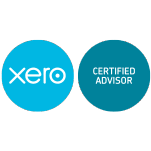Why you need a budget
While budgets are time-consuming to prepare, a well-thought-out budget can greatly improve the performance of your business and help identify problems and opportunities early on. Budgets are simply forecasts of the future, designed to plan and control money coming and going from your business.
Why is it important?
The budget plots the course of the business for the year ahead.
It is used as the benchmark during that year to monitor any differences between actual results and what had been expected.
What’s involved in preparing a budget
The elements of a budget are:
- Planning income and expenses for all areas of the business;
- Coordinating all of these plans into one budget; and
- Setting a yardstick to measure how the business is going.
For the budget to work everyone who has responsibility for looking after parts of it needs to participate in its preparation. Then, they have the motivation to make it work.
Once the budget is agreed upon, it should be fixed for the whole period.
If things change, the budget shouldn’t change. Instead, forecasts should be prepared and used as an additional planning and control tool.
A forecast is simply based on the budget and prepared on a month-by-month basis.
It allows for changed situations and is used to compare actual results against expected results.
Budget preparation (step-by-step procedure)
Step 1 Determine the budget period
Set a period and relevant intervals, eg 6 months measured by weeks or one year measured by months.
Step 2 Set sales budget
As most budgets are primarily determined by the level of sales, it is necessary to make estimates of future sales quantities and the price at which these quantities will be sold.
The need for realism in setting these figures cannot be over-stressed. An overly optimistic sales forecast may result in your business gearing up or taking on additional resources that aren’t used and this can put financial stress on the business in later months, eg additional staff, and larger premises.
[Special note: This presumes that sales determine how many resources are needed. This is not always so, eg some businesses may produce and sell as much as physically possible. In this case, the amount produced would determine the budget.]
Step 3 Production budget
How much you plan to sell, together with how much you want to hold as stock will determine how much you produce.
Look for any physical limitations on your production (eg storage space) otherwise further capital may need to be invested. This would need to be provided for your capital expenditure plan.
Step 4 Materials
How much raw material you need is determined by how much you plan to produce. This requires planning for material inventories and purchases and when they will be needed. It will also make sure suppliers can provide material and allow you to purchase when prices are favorable.
The amount of material you need, however, can only be calculated properly by accurately estimating the price and quantity of raw materials to complete the finished product. It is a good idea to set up a cost system to help with this.
Step 5 Direct labor
Calculate the labor you need to meet your production target.
You will need to estimate hourly rates, taking into account lost time allowances.
Step 6 Overhead
The amount you produce also determines to a large degree the overheads you need. Watch overhead levels as certain fixed overheads cannot be readily scaled back in the short term.
Step 7 Capital expenditure
As referred to above, to achieve various production levels or to ensure production costs are minimized certain capital expenditures may be required eg new plant and equipment.
You must make sure that this expenditure is economically justified before going ahead. It may tie up a lot of resources that could be better spent elsewhere.
Step 8 Period and other costs
Selling, administration, and finance costs are determined by the level of sales, production, capital projects, and working capital needs.
Getting the budget right
Budgets necessarily involve estimation and prediction.
The crystal ball is never clear.
It is a good idea to test the budget at different levels of sales or look at different scenarios to identify the effects on profits and cash flows.
Some final thoughts
A budget should be your official financial plan for the period.
However, as it is future-looking, it will inevitably become dated as circumstances change and actual results are recorded.
Because of these changes, regular re-forecasting over the next 12 months or for each period until the end of the year may be necessary to prevent the budget from becoming dated.
How to get started
Once you are committed to developing a budget for your business we will be pleased to assist.
Remember, when the budget is finalized do not put it in the bottom drawer and forget about it.
It is a useful tool that when used effectively will assist you in getting the best out of your business.
See Us First
- Before making any financial decisions.
- To assist you in meeting the necessary legal or financial requirements.
- If you consider that any of the issues contained in this fact sheet may affect you.


